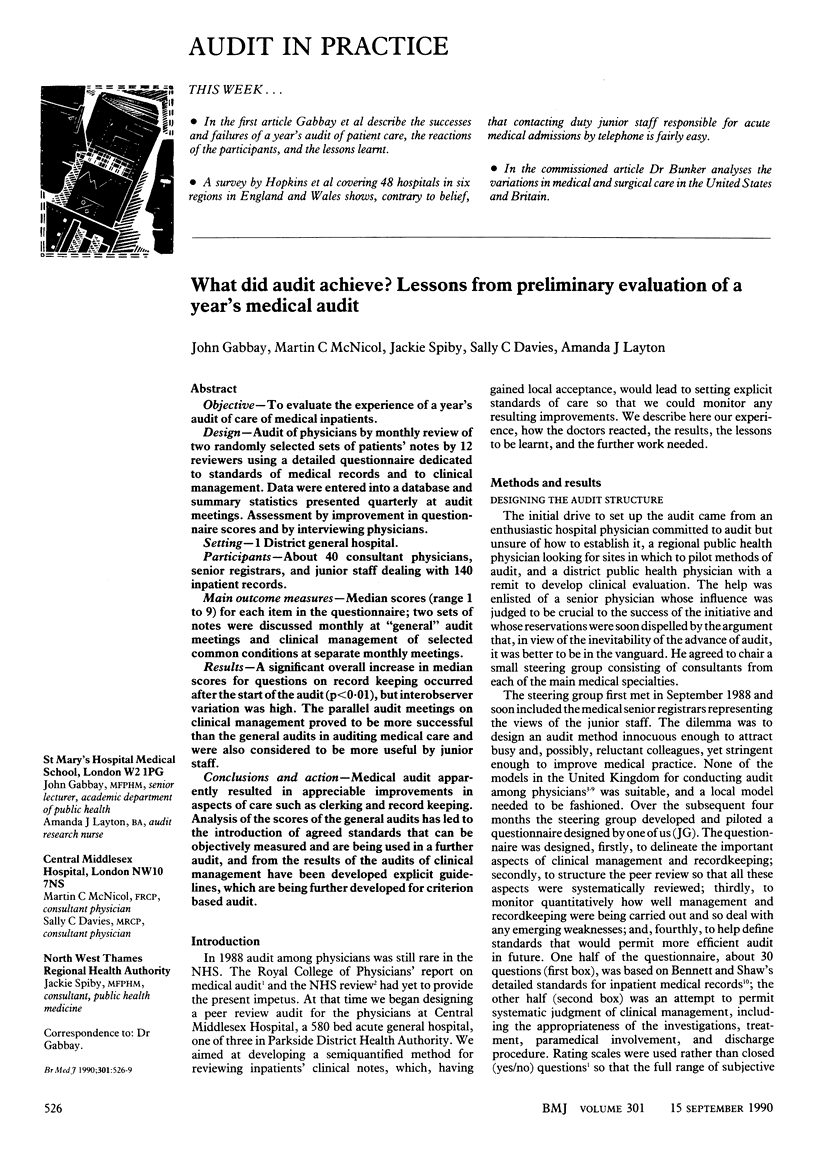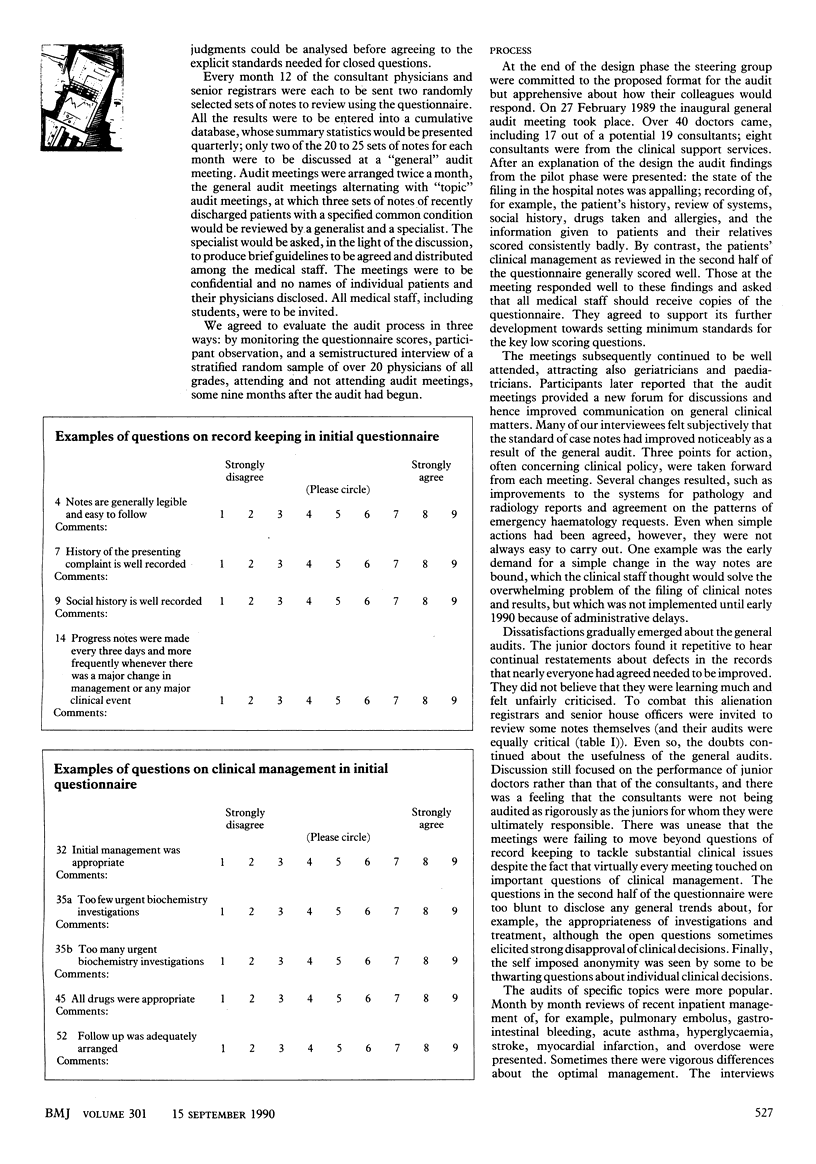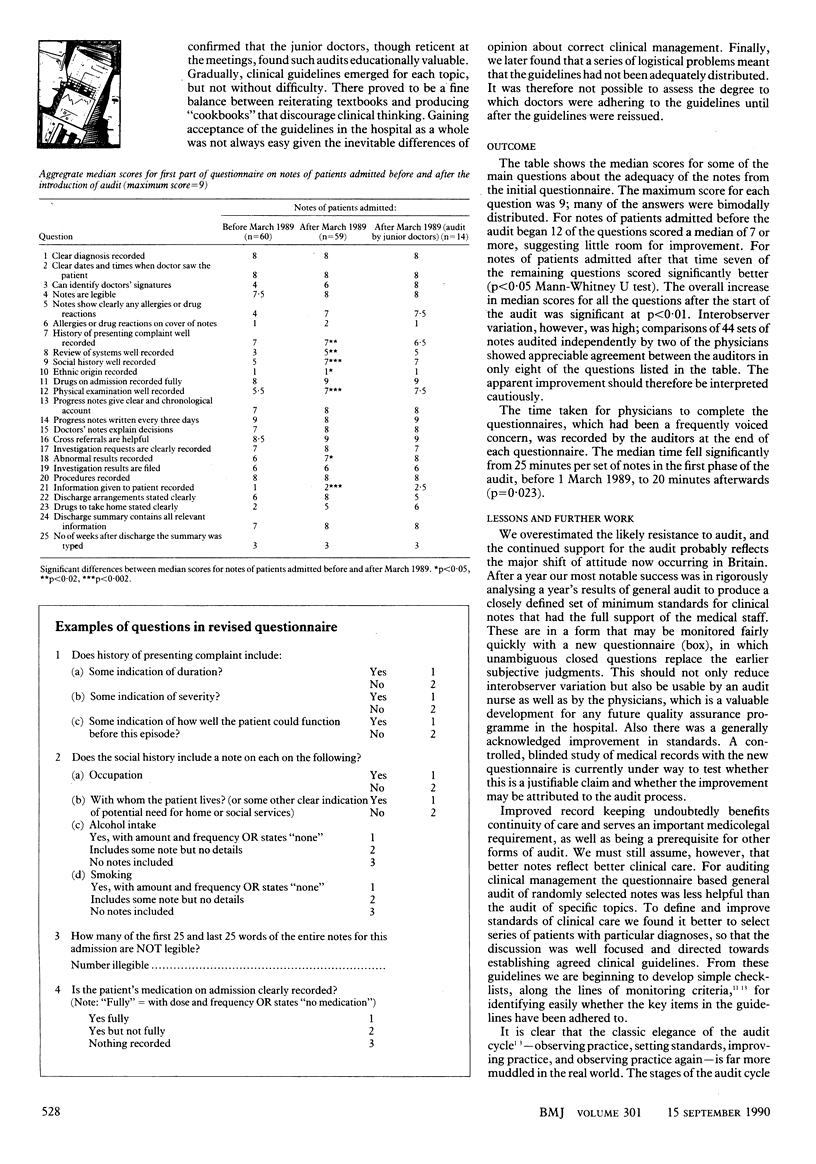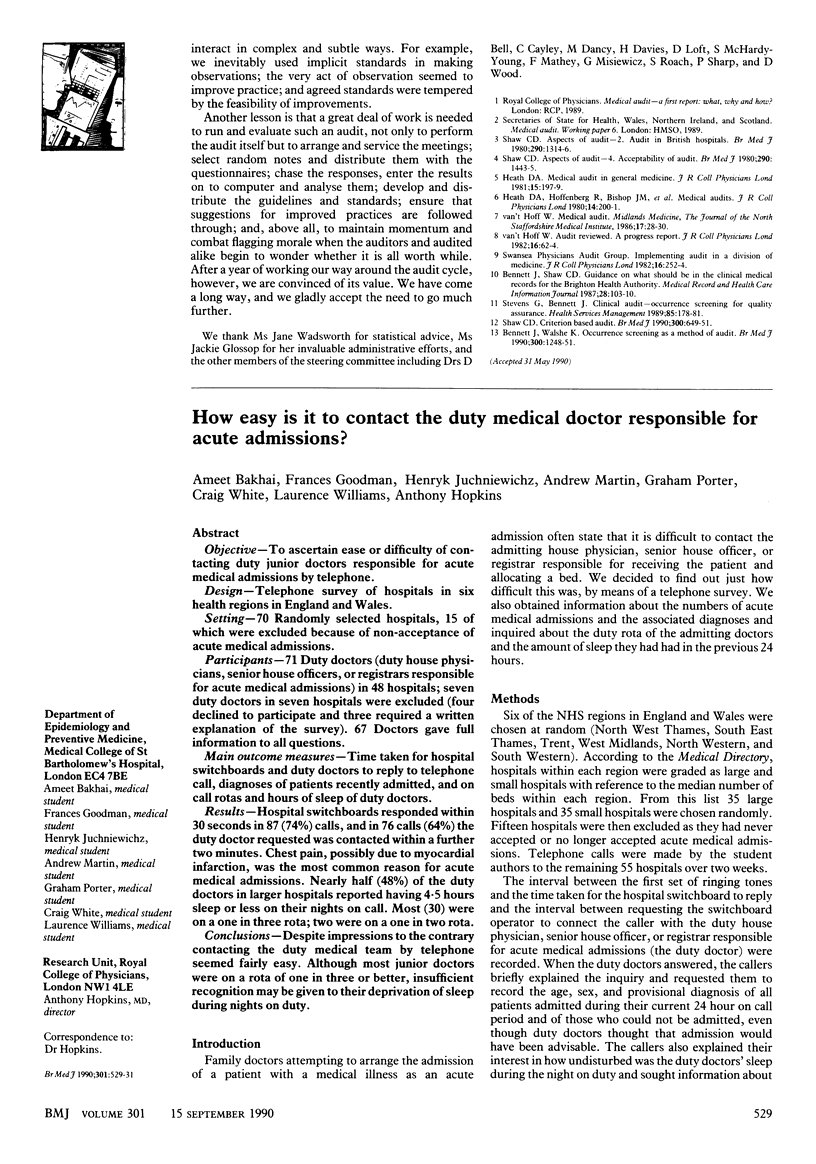Abstract
OBJECTIVE--To evaluate the experience of a year's audit of care of medical inpatients. DESIGN--Audit of physicians by monthly review of two randomly selected sets of patients' notes by 12 reviewers using a detailed questionnaire dedicated to standards of medical records and to clinical management. Data were entered into a database and summary statistics presented quarterly at audit meetings. Assessment by improvement in questionnaire scores and by interviewing physicians. SETTING--1 District general hospital. PARTICIPANTS--About 40 consultant physicians, senior registrars, and junior staff dealing with 140 inpatient records. MAIN OUTCOME MEASURES--Median scores (range 1 to 9) for each item in the questionnaire; two sets of notes were discussed monthly at "general" audit meetings and clinical management of selected common conditions at separate monthly meetings. RESULTS--A significant overall increase in median scores for questions on record keeping occurred after the start of the audit (p less than 0.01), but interobserver variation was high. The parallel audit meetings on clinical management proved to be more successful than the general audits in auditing medical care and were also considered to be more useful by junior staff. CONCLUSIONS AND ACTION--Medical audit apparently resulted in appreciable improvements in aspects of care such as clerking and record keeping. Analysis of the scores of the general audits has led to the introduction of agreed standards that can be objectively measured and are being used in a further audit, and from the results of the audits of clinical management have been developed explicit guidelines, which are being further developed for criterion based audit.
Full text
PDF



Selected References
These references are in PubMed. This may not be the complete list of references from this article.
- Bennett J., Shaw C. D. Guidance on what should be in the clinical medical records for the Brighton Health District. Med Rec Health Care Inf J. 1987 Nov;28(4):103–110. [PubMed] [Google Scholar]
- Bennett J., Walshe K. Occurrence screening as a method of audit. BMJ. 1990 May 12;300(6734):1248–1251. doi: 10.1136/bmj.300.6734.1248. [DOI] [PMC free article] [PubMed] [Google Scholar]
- Heath D. A., Hoffenberg R., Bishop J. M., Kendall M. J., Wade O. L. Medical audits. J R Coll Physicians Lond. 1980 Jul;14(3):200–201. [PMC free article] [PubMed] [Google Scholar]
- Heath D. A. Medical audit in general medicine. J R Coll Physicians Lond. 1981 Jul;15(3):197–199. [PMC free article] [PubMed] [Google Scholar]
- Shaw C. D. Aspects of audit. 2. Audit in British hospitals. Br Med J. 1980 May 31;280(6227):1314–1316. doi: 10.1136/bmj.280.6227.1314. [DOI] [PMC free article] [PubMed] [Google Scholar]
- Shaw C. D. Aspects of audit. 4: Acceptability of audit. Br Med J. 1980 Jun 14;280(6229):1443–1446. doi: 10.1136/bmj.280.6229.1443. [DOI] [PMC free article] [PubMed] [Google Scholar]
- Shaw C. D. Criterion based audit. BMJ. 1990 Mar 10;300(6725):649–651. doi: 10.1136/bmj.300.6725.649. [DOI] [PMC free article] [PubMed] [Google Scholar]
- Stevens G., Bennett J. Clinical audit--occurrence screening for QA. Health Serv Manage. 1989 Aug;85(4):178–181. [PubMed] [Google Scholar]


